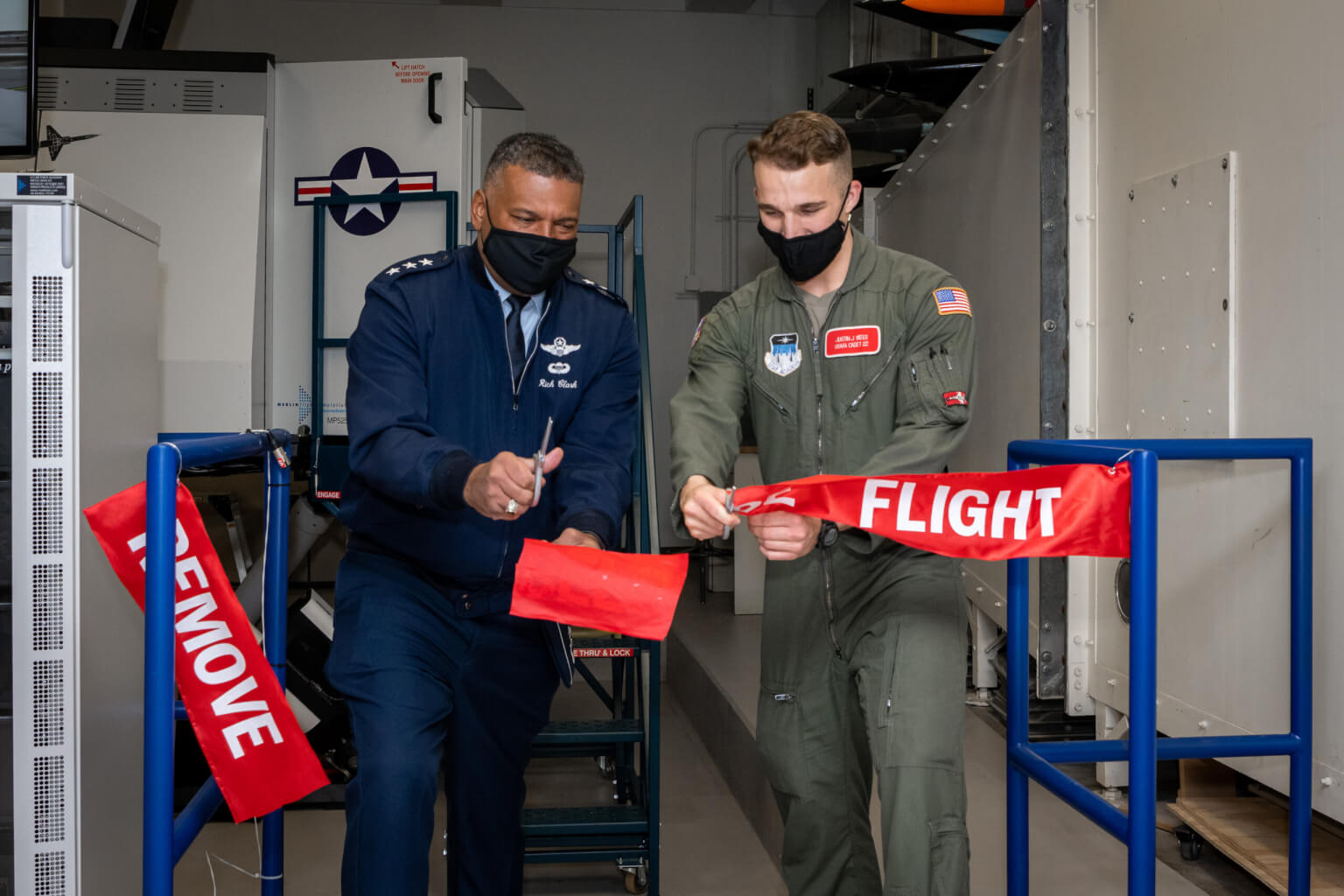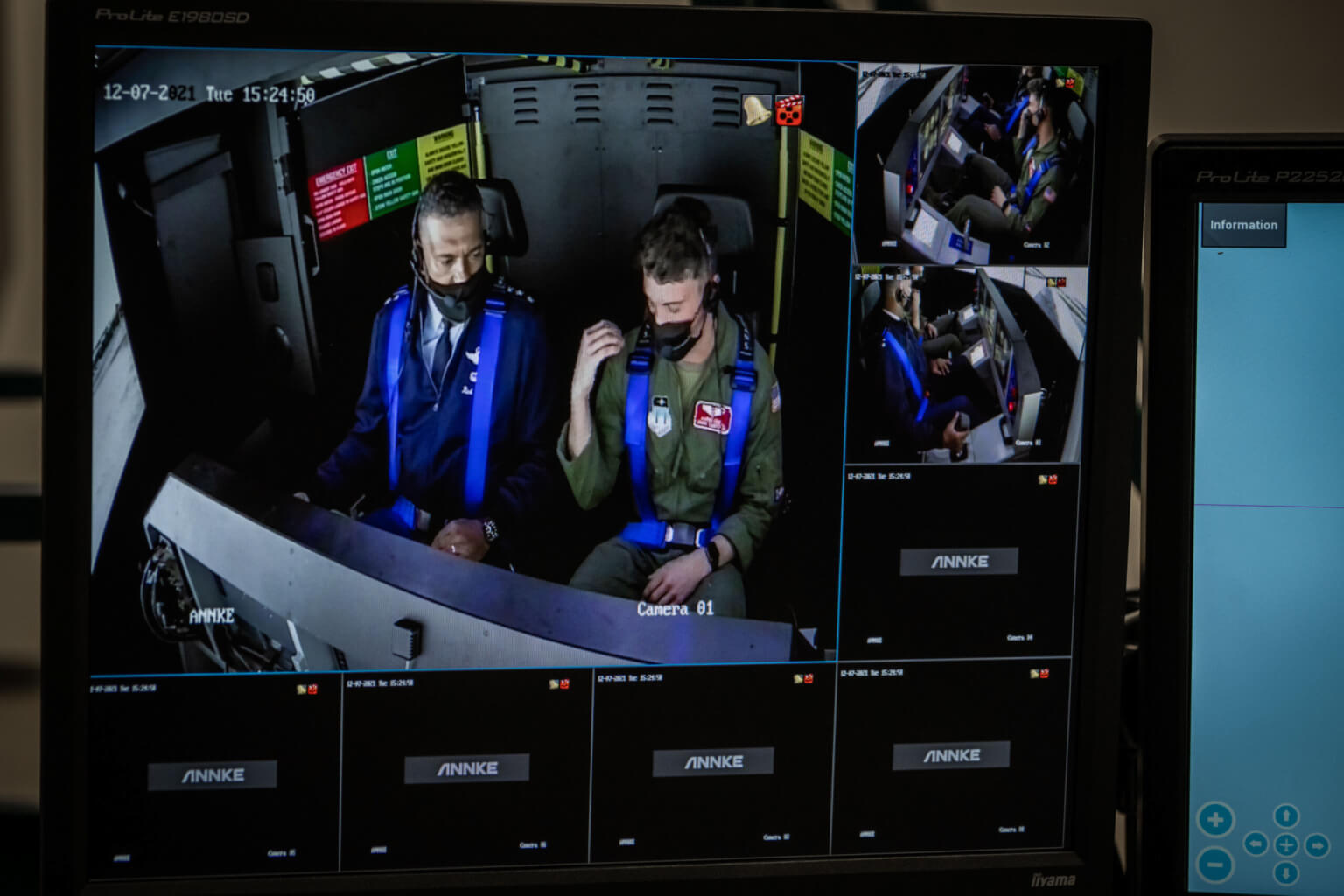Aeronautics cadets, faculty celebrate high-tech aerospace lab upgrades
 Lt. Gen. Richard Clark, U.S. Air Force Academy superintendent, and Cadet 1st Class Justin Yates cut a ribbon to celebrate the installation of two new flight simulators and a shock combustion tube in the school’s aerospace laboratory, Dec. 7, 2021.
Lt. Gen. Richard Clark, U.S. Air Force Academy superintendent, and Cadet 1st Class Justin Yates cut a ribbon to celebrate the installation of two new flight simulators and a shock combustion tube in the school’s aerospace laboratory, Dec. 7, 2021.
Story by Ray Bowden, all photos by Justin Pacheco
U.S. AIR FORCE ACADEMY, Colo. – Cadets researching aeronautics at the Air Force Academy showed off two newly installed $2.2 million simulators and a $1 million combustion shock tube used for hydrocarbon combustion experiments, Dec. 7
Lab director Lt. Col. Judson Babcock said cadets use the Merlin P521 engineering flight simulators to fly and test capstone aircraft designs. The shock tube “allows cadets to participate in cutting edge research on hydrocarbon combustion combustion, driving innovation toward the next generation of hydrocarbon fuel for the Air Force,” he said.
The simulators replicate sorties in a variety of aircraft. Lt. Gen. Richard Clark, the Academy’s superintendent, toured the lab, sat behind the controls of an enclosed simulator to fly a T-41 trainer aircraft sortie and, guided by cadets, set off the first shock wave in the combustion tube.
Shock waves are generated by pressurized gas inside the metal tube creating a chemical combustion.
“To build more efficient and faster engines, researchers need fuel that ignites and burns in short amounts of time,” said aeronautics major Cadet 1st Class Andrew Clapp. “Creating the conditions to burn these ethylene and methane in a lab is difficult, which is why we need the combustion shock tube. The shock inside the tube almost instantly heats the fuels and ignites them to help us study how well they perform in jet engines.”
Jet engines power aircraft by igniting a mix of fuel and air to create a controlled explosion inside the engine.
“One challenge with this is that when air moves quickly through the engine, it’s difficult to burn the fuel, just like lighting a candle in front of a fan,” the cadet said.
Clapp said the ramifications of the project extend beyond academics.
“We can see the real-world impact of our research and work closely with sponsors on our results,” he said. “Even as undergraduates, the data we collect from the combustion shock tube contributes to research on engines for aircraft designed to fly many times faster than the speed of sound.”
A contract for the simulators between the Academy and the manufacturer was agreed to in 2019.
The Academy’s flying programs made Airways Magazine’s “Top 10 Colleges with Aviation Programs” report this year.
